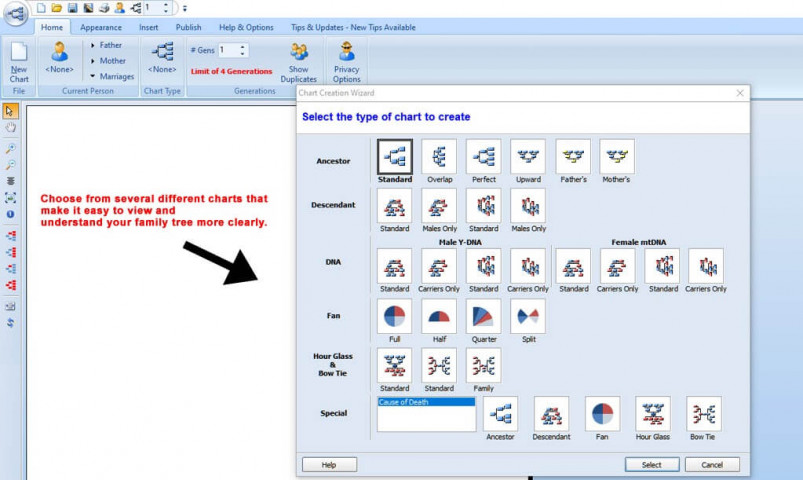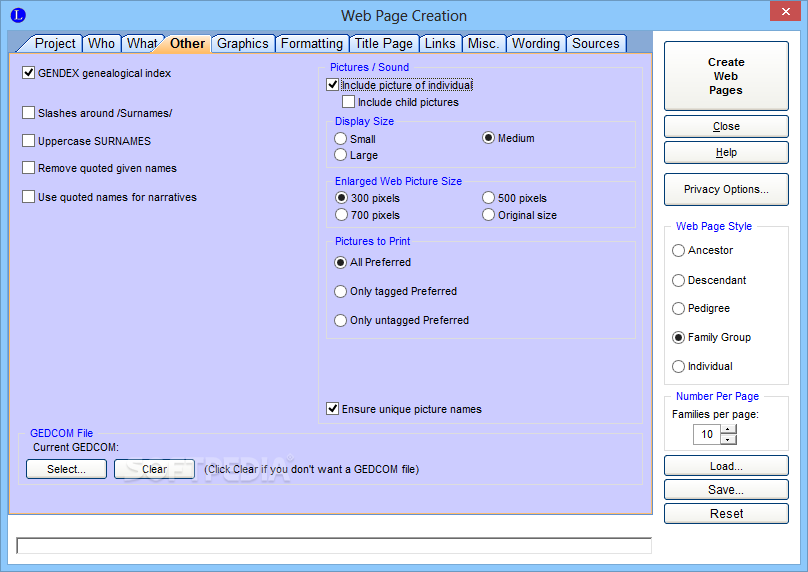

- #LEGACY FAMILY TREE FILE EXTENSION HOW TO#
- #LEGACY FAMILY TREE FILE EXTENSION ARCHIVE#
- #LEGACY FAMILY TREE FILE EXTENSION SOFTWARE#
- #LEGACY FAMILY TREE FILE EXTENSION WINDOWS 7#

If you cannot locate your family file using the five methods listed above, restore your family file from your most recent backup copy, use the Window 7 Search feature to find your family file with a wildcard search. Seek professional help to replace your hard drive, re-install Legacy and restore your family file from a backup copy.
#LEGACY FAMILY TREE FILE EXTENSION WINDOWS 7#
If Windows 7 finds your lost family file, double click on it in the results screen and it will open in your Legacy program. If no items match your search, click on "See more results" and select Computer. In the "Search programs am files" field (right above the round start button) type *.FDB and press Enter on your keyboard. Next, click on the round start button in the lower left corner of your Desktop screen. Use the Window 7 Search feature to find your family file with a wildcard search.Next, in the Legacy Family Tree program click on File > Open Family File and browse to the folder where the family file resides. Examine the results in the genealogy file list and if your Legacy family file is listed, make note of its location (path) and close the Legacy Charting. Use the Legacy Charting program to find genealogy files on your computer.By default this opens the C:\Legacy\Data folder where your family file may be located. Click on File and select Open Family File from the pull-down menu.Clicking on a family file listed here will open it (so long has it has not been moved, renamed or deleted). Legacy will show the last four family files opened. Click on File and look at the bottom of the pull-down menu below Exit.Here are the things to try when searching for your lost family file: A hard drive crash, in which case you family file is probably gone for good.FDB file was inadvertently deleted and may be in your system Recycle Bin.
#LEGACY FAMILY TREE FILE EXTENSION HOW TO#
FDB file was renamed or moved to another location and Legacy no longer knows how to find it. FDB file is located, but it is still in its original location on your hard drive. When you “lose” a family file on your computer, there are four possibilities: The icon looks like a manilla folder with a zipper. A Legacy backup file will show as “Compressed (zipped) Folder (.zip)” on the General tab. You can identify a backup file or Legacy family file type by right-clicking on the file and selecting Properties from the popup menu.
#LEGACY FAMILY TREE FILE EXTENSION ARCHIVE#
ZIP (a “zipped” or compressed archive file).


The icon associated with a Legacy file looks like a sheet of white paper with a small red and blue Legacy shield in the middle of it.
#LEGACY FAMILY TREE FILE EXTENSION SOFTWARE#
A Legacy family file will show as “Legacy Genealogy Software (.fdb)” on the General tab. You can identify a Legacy family file type by right-clicking on the file and selecting Properties from the popup menu. Windows may hide the family file extension. These files are the primary data file for your genealogical information.


 0 kommentar(er)
0 kommentar(er)
